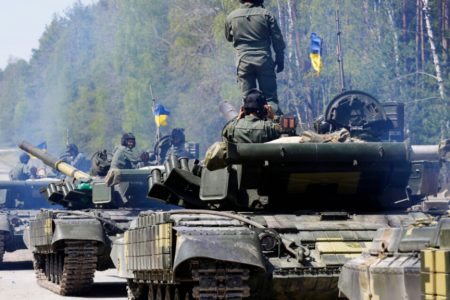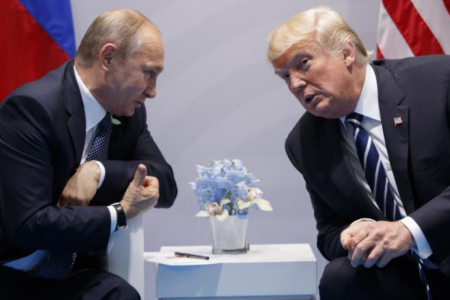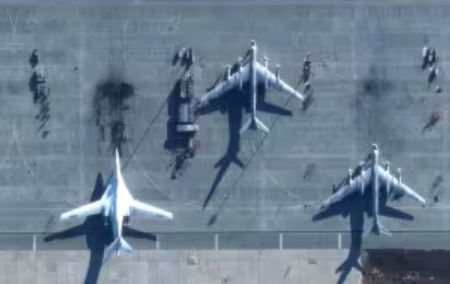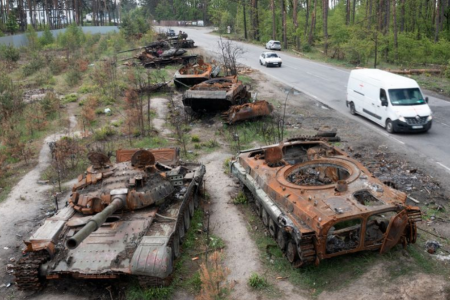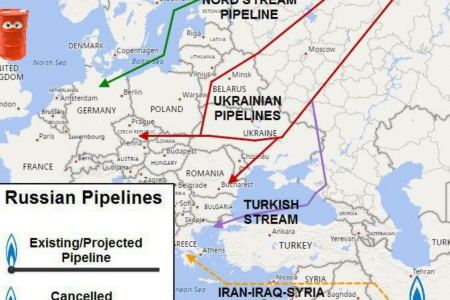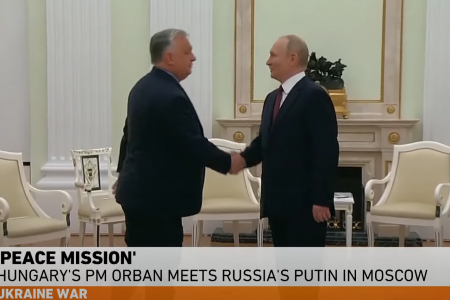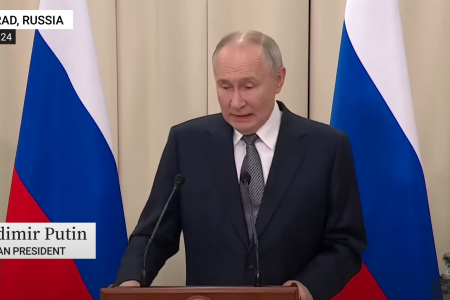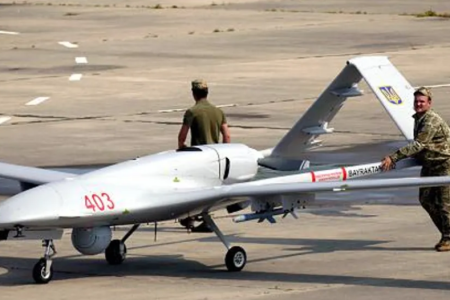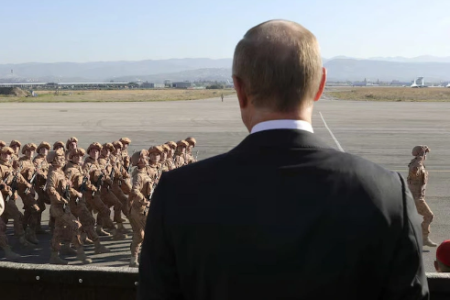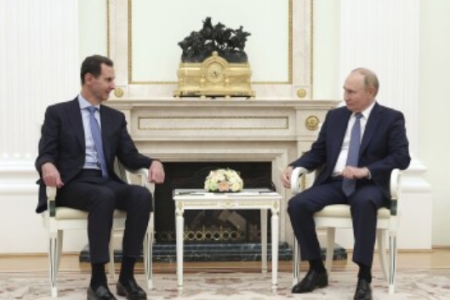
More than 200 Chinese iron-shell ships “bonded to avoid storms” during a month (from Union Banks cluster which belongs to the Truong Sa (Spratlys) in the South China Sea (Vietnam calls it the East Sea). Hanoi asked China to stop violating Vietnam’s sovereignty. Manila condemned the “presence of herds and intimidation” of the “militia of the sea” of China, asserting that the Whitsun Reef is located in the exclusive economic zone (ZEE) of the Philippines.
Washington has repeatedly declared its support for Manila, affirming that it will apply a joint defense treaty in the event of an armed attack in the South China Sea. From April 4, 2021, the fleet Theodore Roosevelt CSG of an aircraft carrier and the amphibious fleet Makin Island ARG have been present in the South China Sea to “exercise tactical capabilities and demonstrate unceasing efforts for security and prosperity in the Indo-Pacific region.” According to USNI News on April 8, at this time, 44 Chinese marine militia ships were still anchored near Whitsun Reef.
At the same time with the Chinese fleet still “shelter from the wind and storm” in Whitsun Reef, FM Wang Yi received four of his colleagues Singapore, Indonesia, Malaysia, and the Philippines individually in Fujian province from March 31 to April 2. According to the Global Times on April 5, the meetings convey “a clear message (of Beijing), especially when foreign powers, under the US’s hope, are trying to dig deep separation between ASEAN and China by promoting the Indo-Pacific strategy and the Quartet-QUAD alliance to counter Chinese influence.”
In addition to the US, other powers such as Japan, Great Britain, Australia, and Canada also oppose China’s fleet of marine militia ships anchored in the Whitsun Reef, as well as Beijing’s claims in the South China Sea. Thanks to this support, Vietnam and the Philippines in particular, the two countries that claim sovereignty over the Whitsun Reef, and the countries in the region in general that have disputes with China, will probably be less “alone” to confront Beijing, according to Antoine Bondaz, an East Asia researcher at the French Foundation for Strategic Studies (Fondation pour la Recherche stratégique, FRS), when answering RFI in Vietnamese on April 7, 2021.
RFI: Chinese Foreign Minister Wang Yi meets with his four counterparts Singapore, Malaysia, Indonesia, and the Philippines from March 31 to April 2 in Fujian province. In what context do those bilateral meetings take place? Why these four countries?
Antoine Bondaz: First of all, it is important to emphasize a very important point, that is the real dynamic activity of China for Southeast Asian countries. The Association of Southeast Asian Nations (ASEAN) is an indispensable partner of Beijing.
First, by 2020, ASEAN will become China’s top trade partner, with more than $730 billion in trade, surpassing the EU. China has always been ASEAN’s top trading partner. Second, the year 2021 marks 30 years of the establishment of diplomatic relations between China and the 10-member bloc. Therefore, the two sides have a very important commercial and political partnership. Finally, diplomatically, as competition between Beijing and Washington keeps growing, so does the importance of Southeast Asia.
In that context, Chinese diplomacy has become extremely active in Southeast Asia from late 2020 and early 2021. In November 2020, Chinese Foreign Minister Wang Yi traveled to Cambodia, Malaysia, Laos, Thailand, and Singapore. Then, in January 2021, Wang Yi went to Burma, Indonesia, Brunei, and the Philippines, which meant covering all ASEAN member countries, except Vietnam. But before that, Mr. Wang Yi met with his Vietnamese counterpart in August 2020.
We can see that China seeks to influence all over Southeast Asia, interacting with all of the partner countries. And Mr. Wang Yi’s meeting with the foreign ministers of four ASEAN countries in southern China in early March 2021 also aimed to emphasize the importance of ASEAN in terms of economics, politics, and diplomacy.
RFI: As you said Vietnam is not part of Wang Yi’s two Southeast Asian tours in late 2020 and early 2021, followed by a round of work in Fujian province, it still feels like Vietnam is suffering “isolation”?
Antoine Bondaz: I think there are probably a lot of theories. It is possible that the Chinese diplomatic sector said that there had been a meeting in August 2020, less than a year ago, so Vietnam was placed on par with all other ASEAN countries.
Next, from a more political perspective and it should be emphasized that this is just a hypothesis, maybe China’s policy is to “isolate” Vietnam enough for Vietnam to give in, even in terms of politics through less open criticism, for example, Beijing’s policy on the South China Sea. We know well that the tensions between China and Vietnam and the Philippines have been very large and constantly increasing, in addition, Hanoi has been more aggressive in defending its interests in recent years.
Vietnam is also partly benefiting from the economic and epidemiological crisis as it becomes an indispensable regional partner for foreign investors, for example in the case of Japan and South Korea. China’s goal may be to avoid increasing cooperation with other countries.
RFI: At the same time with the meetings between foreign minister Wang Yi and four Southeast Asian counterparts, more than 200 Chinese fishing boats are still anchored at Whitsun Reef in Spratlys. What must be explained about Beijing’s aggression in the field and diplomacy?
Antoine Bondaz: Beijing’s line has been quite consistent and unchanged in recent years. That means Beijing has maximum claims, covering most of the South China Sea in the nine-dash line, not just a few small islands.
Second, from the very beginning, China pursued a strategy of changing the status quo in the region by step by step adopting new policies aimed at changing the status quo, such as the accretion of artificial islands and the militarization of the islands it occupies in the South China Sea.
Third, Beijing regularly uses new elements, known as the “maritime militia” force under the Central Military Commission, but not the Navy or Coast Guard. This measure gives China some flexibility in its political approach and, above all, manages the escalation. This is precisely the purpose of China. Using marine militias, which is forcing other countries to either do nothing or step into an escalation of tensions. Thereby, China can consider or find ways to turn Vietnam or the Philippines into the parties that send the Coast Guard or Navy to first and thus must be responsible for political escalation, even military conflict.
Again, do not forget that China’s goal is to change the status quo by running what could be described as a “mixed war.” This means carrying out campaigns that change the status quo but never break the threshold that could cause a conflict.
For countries in the region, it is very difficult to confront unilaterally, whether it is Vietnam or the Philippines. The strategy recently adopted by Manila is to “internationalize” the situation, communicating as widely as possible by identifying what is happening, denouncing what China is doing, and inviting the US, as well as another country, to speak up about the situation in the region.
This explains the extremely harsh statements from the Chinese ambassador to the Philippines as well as from the Chinese diplomacy. Beijing harshly criticized Manila and argued that the Philippines had no legitimacy to condemn China’s actions. Beijing seeks to impose its intentions on regional countries, especially the Philippines, which have few means to confront China alone.
RFI: ASEAN always calls on parties to not cause tensions in the region and will not choose sides. But in the face of Beijing’s increasing pressure in the South China Sea, has the US presence helped to maintain the balance?
Antoine Bondaz: It is clear now that there is a considerable lack of balance in the relationship between China and Vietnam and between China and the Philippines as long as Hanoi and Manila cannot stand up to Beijing alone. Therefore, on the one hand, there is a need to strengthen its own defense, as we see Vietnam modernizing its military, including its navy. But at that pace of modernization, it is also incapable of resisting the might of the Chinese military and will not be able to face it in the future. So the goal is to rely on and try to have international support, like in terms of security.
We see that many countries in the region, such as Indonesia are moving closer to Japan to modernize their military, Vietnam is doing the same with many other countries. And especially in terms of political and diplomatic reality, whether Vietnam or the Philippines does not seek to associate with the US, these two countries should seek to gain the support of Washington and in the future, the European Union in order to be less isolated and could face Chinese pressure. But again, the difference between the two is huge.
The new factor that could benefit these countries is the unprecedented concerted effort deployed by the Joe Biden administration, including in the Indo-Pacific region. We have seen in the past few weeks the QUAD Summit (US, Australia, Japan, and India), followed by a visit to Japan and South Korea by US Secretary of State Anthony Blinken. This is only the third, since 1945, the first overseas trip of a US secretary of state has been in Asia, before that of Secretary of State David Dean Rusk in 1961 and Secretary of State Hillary Clinton in 2009.
We also see that the Quartet countries have agreed to produce more than 1 billion doses of Covid-19 vaccine between now and the end of 2022 for Southeast Asian countries, and more broadly, the Indo-Pacific. This shows that the US put a lot of effort into coordination and it could be beneficial for Vietnam and the Philippines even though neither Hanoi nor Manila will join the Quad.
RFI: So the situation in the South China Sea and Southeast Asia will continue to be hot in the near future?
Antoine Bondaz: In my opinion, it’s important to understand that Southeast Asia is an increasingly strategic region. As tensions between the US and China continue to rise, Southeast Asia remains of increasing importance. As mentioned above, ASEAN is China’s largest trading partner. In addition, Southeast Asia is centrally located in the Indo-Pacific region that brings together traditional or non-traditional security challenges, while many countries, including many European countries, are developing an Indo- Pacific Ocean strategy.
The Southeast Asia region as well as the ASEAN member countries recognized their importance. So this is an unprecedented opportunity for countries like Indonesia and Vietnam to get closer to European countries. It is true that Vietnam or Indonesia has moved closer to some regional countries, such as Korea, Japan, Australia, or Taiwan, each of which has at least one policy for Southeast Asia in recent years.
However, the European Union will do more and as such ASEAN, like its member countries, will have an even more important role than before. Since then, ASEAN can not only take advantage of the US-China competition but also benefit from the growing interest of European countries in this region. Once again, I think Indonesia and Vietnam, for example, will benefit greatly.
RFI Vietnamese would like to thank ryou Antoine Bondaz, East Asia expert at the French Foundation for Strategic Studies (Fondation pour la Recherche stratégique, FRS).
Thoibao.de (Translated)



